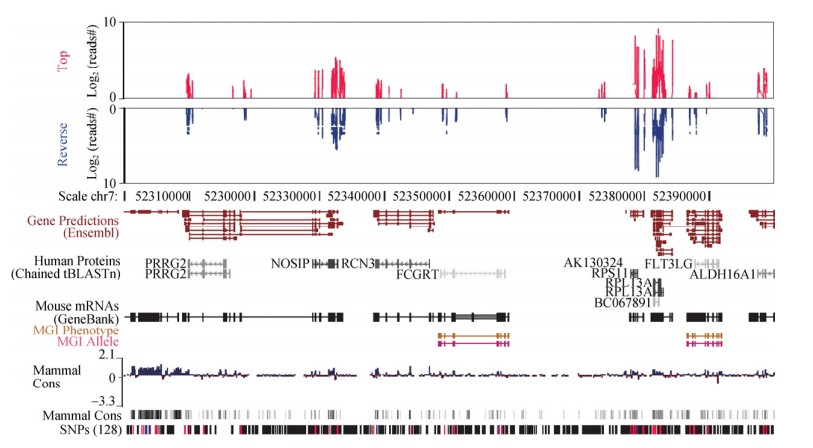Gene2DGE—A Tool for Renewal of Gene Models with DGE-seq Data
Digital gene expression sequencing (DGE-seq) equips researchers with a powerful tool to obtain unbiased and unparalleled information about gene transcripts. With DGE-seq, huge numbers of novel transcripts have been identified beyond the known loci. Nevertheless, not much effort has been taken to ab initio define the read-enriched regions (RERs) in detail and compare them with known gene models. Prof. LIANG Shangdong and his team in Nanchang University collaborated with Drs. DENG Libin and ZHANG Dake at Beijing Institute of Genomics (BIG), Chinese Academy of Sciences (CAS), developed an exploratory tool, Gene2DGE, which can be employed to determine the RERs and improve genome annotation.
Gene2DGE, as an ab initio method to annotate the transcriptome, refers to RER definition based on read clustering and annotation comparison with known gene models. In their work, they tested Gene2DGE with mouse blastomere transcriptome. They found that one quarter of the RERs detected by Gene2DGE were located outside of the annotated regions and half of those were intronic. Interestingly, some genes only had transcripts detected in the intronic regions. As a result, 4,788 gene models were renewed, which indicated that Gene2DGE is a suitable tool for the renewal of known gene models by ab initio prediction in transcriptome dissection.
The Gene2DGE package is freely available at http://bighapmap.big.ac.cn/

Transcriptome features of mouse blastomere illustrated by DGE data based on annotation available. (Image by TANG Xiaoli et al.)
Paper link: http://www.sciencedirect.com/science/article/pii/S1672022911600338